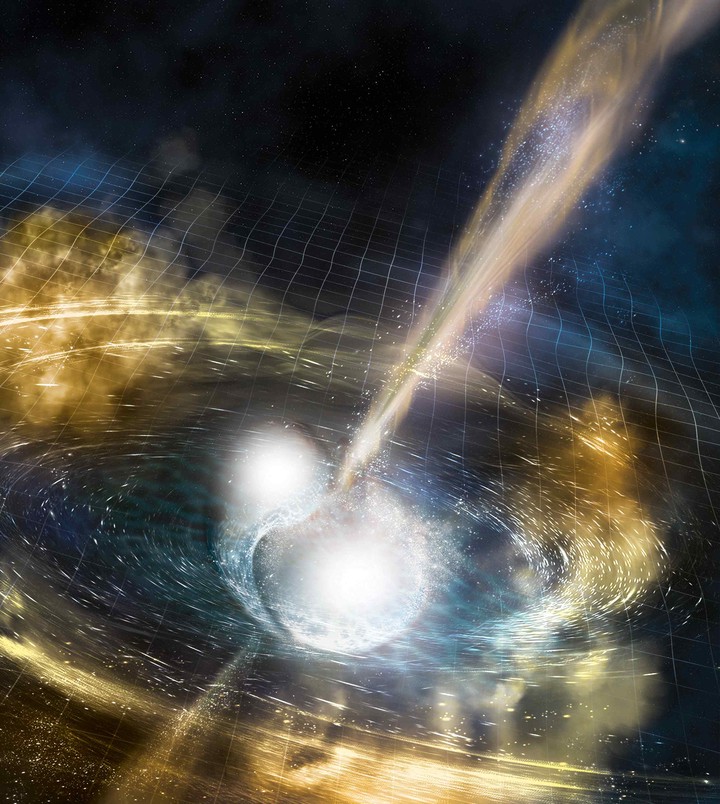Gamma-ray bursts
 A. Simmonet (NSF, LIGO, Sonoma State University) illustration of GRB170817
A. Simmonet (NSF, LIGO, Sonoma State University) illustration of GRB170817Gamma-ray bursts are extremely energetic explosions, first observed in the 1960s with satellites built to detect nuclear explosions on Earth. There are two scenarios of how such energetic bursts can be formed naturally: by a collision of two stars (e.g., neutron stars) or when a massive star reaches its lifetime end and implodes. In both cases, we also expect gravitational waves to be produced due to the large quadrupole moment.
The satellites and observational techniques advanced enough that about one Gamma-ray burst is observed daily. However, many of these bursts are so far in distance that gravitational-wave detectors cannot find the counterparts for these bursts using usual gravitational-wave searches. As a result, we perform a subthreshold coincident search which is more efficient because the time and location of a Gamma-ray burst is known.
I analysed the data around tens of Gamma-ray bursts throughout the second and third LIGO-Virgo-KAGRA observing runs, including the famous GW170817–GRB 170817A. In addition, I led the analysis group that searched for unmodelled gravitational waves in coincidence with Gamma-ray bursts. As a group leader, I presented the analyses and results at various conferences and seminars.
For more details, see the collaboration papers published on ApJ: 1, 2, 3, 4.